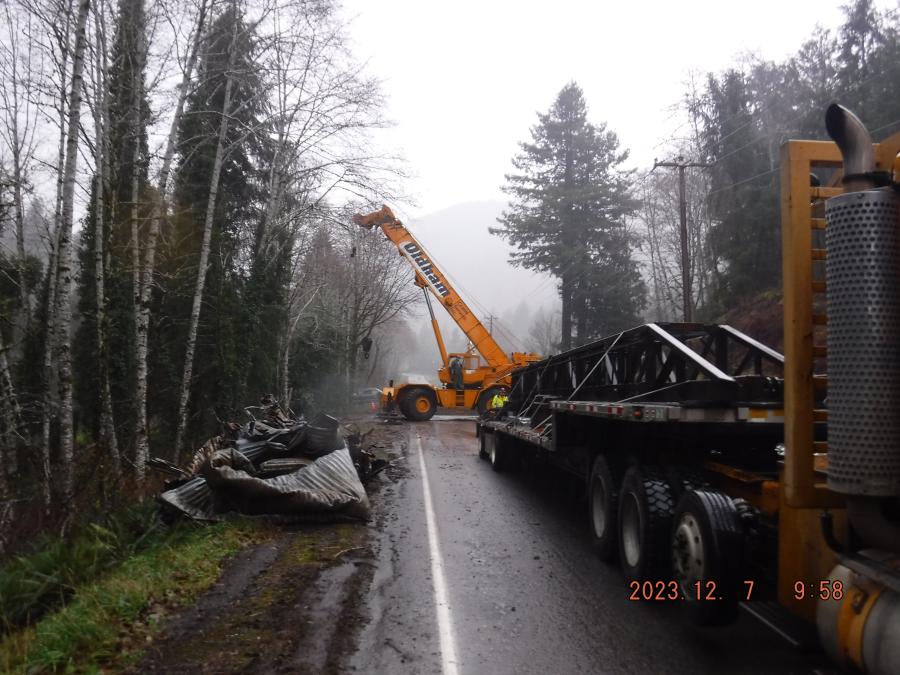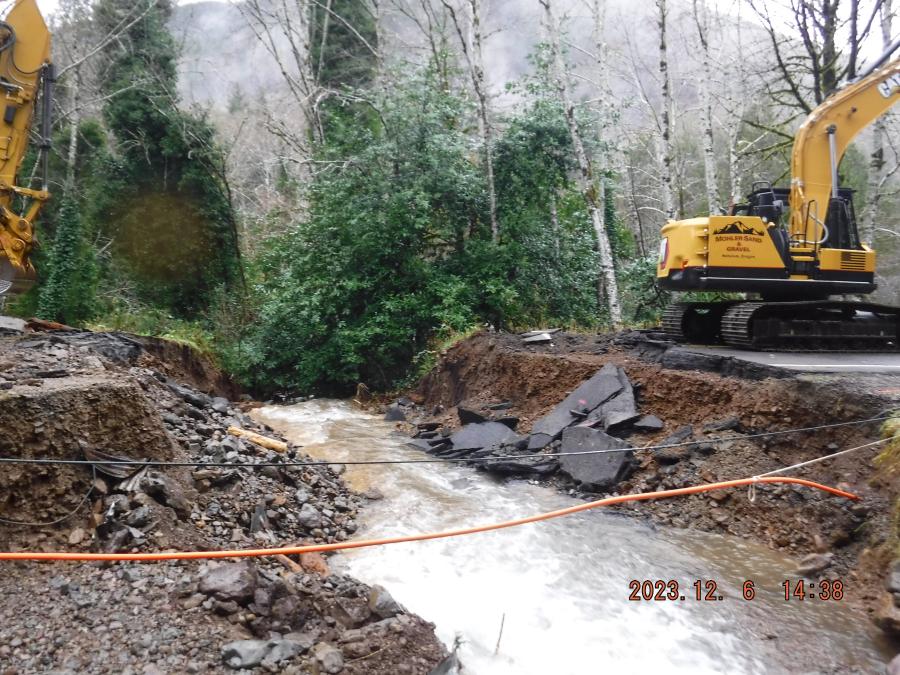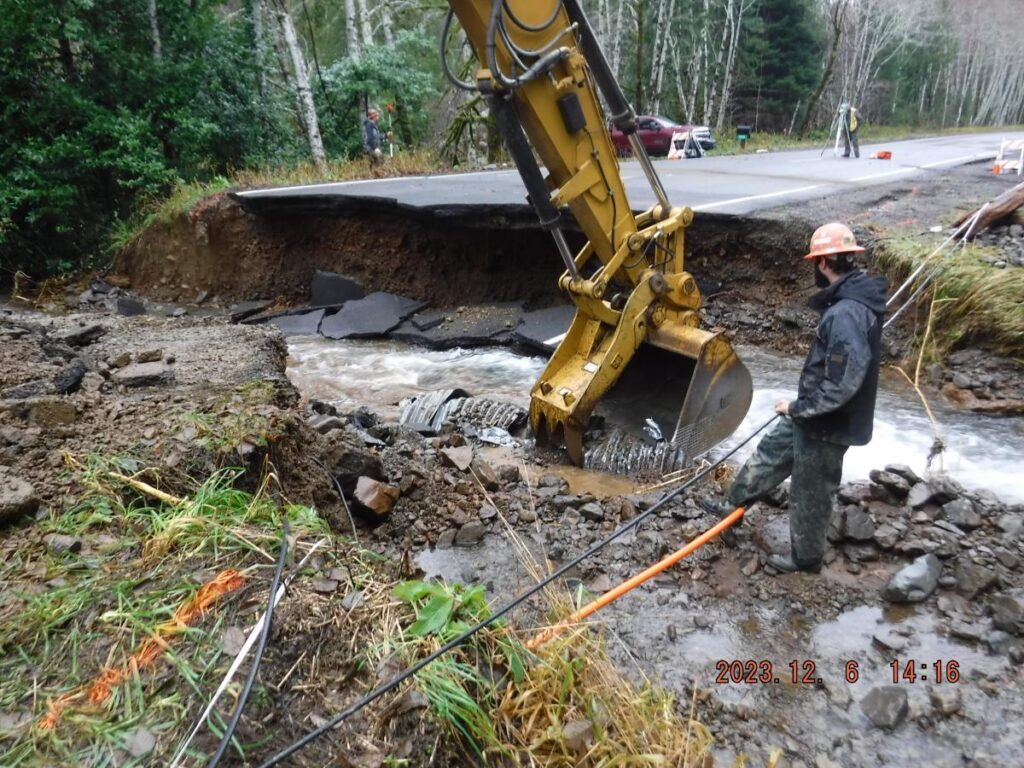Photo courtesy of Oregon Department of Transportation
Construction crews from HP Civil were contracted to repair and replace a bridge in Tillamook, Ore., in less than two weeks after torrential downpours washed out a critical traffic corridor linking northern coast communities.
Construction crews in Tillamook, Ore., raced against the winter weather to build a new bridge in less than two weeks after torrential downpours washed out a critical traffic corridor linking northern coast communities.
“Without Miami Foley Road, the only way north-south is [U.S.] 101 and 101 has a tendency to slide throughout the winter,” said Tillamook County Public Works Director Chris Laity. “If that were to happen, you wouldn’t be able to get from Astoria to Tillamook without going to Portland. So, we said no, bulldoze ahead, let’s go. We didn’t want to wait one more hour than we had to because of how critical that route is.”

Photo courtesy of Oregon Department of Transportation
If building a new bridge in a rural community in only a matter of days seems an almost impossible task, the county did have a head start. Crews did not work from scratch, but rather accelerated a project originally set to begin next summer. The culvert on Miami Foley Road originally blew out in 2016. The county made a temporary repair. Later, using federal funds, the Oregon Department of Transportation (ODOT) designed a replacement for the culvert. In August, the contract was awarded to Salem-based HP Civil Inc. Then 6 in. of rain in a matter of a few days washed out the culvert and the work couldn’t wait.
“This one is kind of a unique situation,” Laity said. “The plans were already done. The contractor was on board to build a 50-foot bridge in the summer of 2024. After we went out there and saw what happened when the culvert blew again that morning, I reached out to the engineer of record and the county commissioners. Because of how critical that route is, the commissioners declared an emergency and what that allowed us to do was directly hire HP Civil, who already had the contract with ODOT. But knowing that we could put in a bridge faster than ODOT could, we contracted with them directly.”
Laity also hired McGee Engineering as a partner in the project, independent of HP Civil.
“There was discussion of whether to put McGee under HP or run a separate contract,” Laity said. “We decided it was best to run a separate contract. The reason is, when the project is built, HP Civil steps away. McGee will load rate the bridge, taking a little longer to finish off their part of the project. A lot of it was just to keep it clean.”
The original bridge design called for 50-ft. beams, but when contractors were able to find 60-ft. beams in Eugene, Laity secured them, knowing other communities also might be looking for similar materials. In this case, the extra 10 ft. in the beams turned out to be a bonus.
“When the culvert blew out this time around a couple of days ago, it blew the road out and there’s 30 feet of water running at the base, so by going with a longer span it gives us a little bit more flexibility with the running water.”

Photo courtesy of Oregon Department of Transportation
The contract for the emergency fix, which is permanent, is $630,000. It’s part of a $2.4 million project that includes two county bridges. The Miami Foley Road bridge is concrete, set on 12 piles driven 80 ft. deep. It is two lanes with guardrails. Laity expects contractors to finish the project, including a fish passage component, this summer.
In December, only days into the project, crews had the foundation complete and awaited delivery of the beams. The road was set to open to emergency services less than a week after work had begun and to the public a short time later.
“This is standard construction,” Laity said. “We already had all the information. We knew where the utilities were. The utility companies already knew the project. Everything is done with the right-of-way. We did not have to worry about right-of-way acquisition. It’s already cleared all the environment components. It was already permitted. The centers are at the same location of the bridge that they would have been if it was built over the summer. It’s kind of a unique thing where we took advantage of the knowledge that was already there.” CEG
Read the full article here











